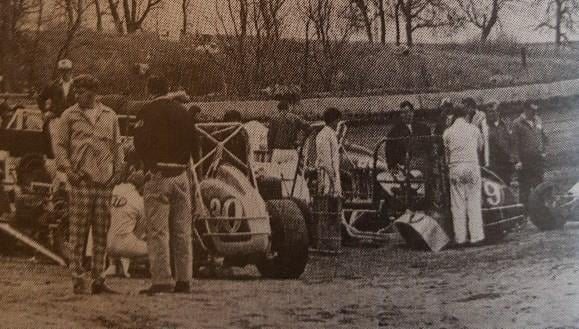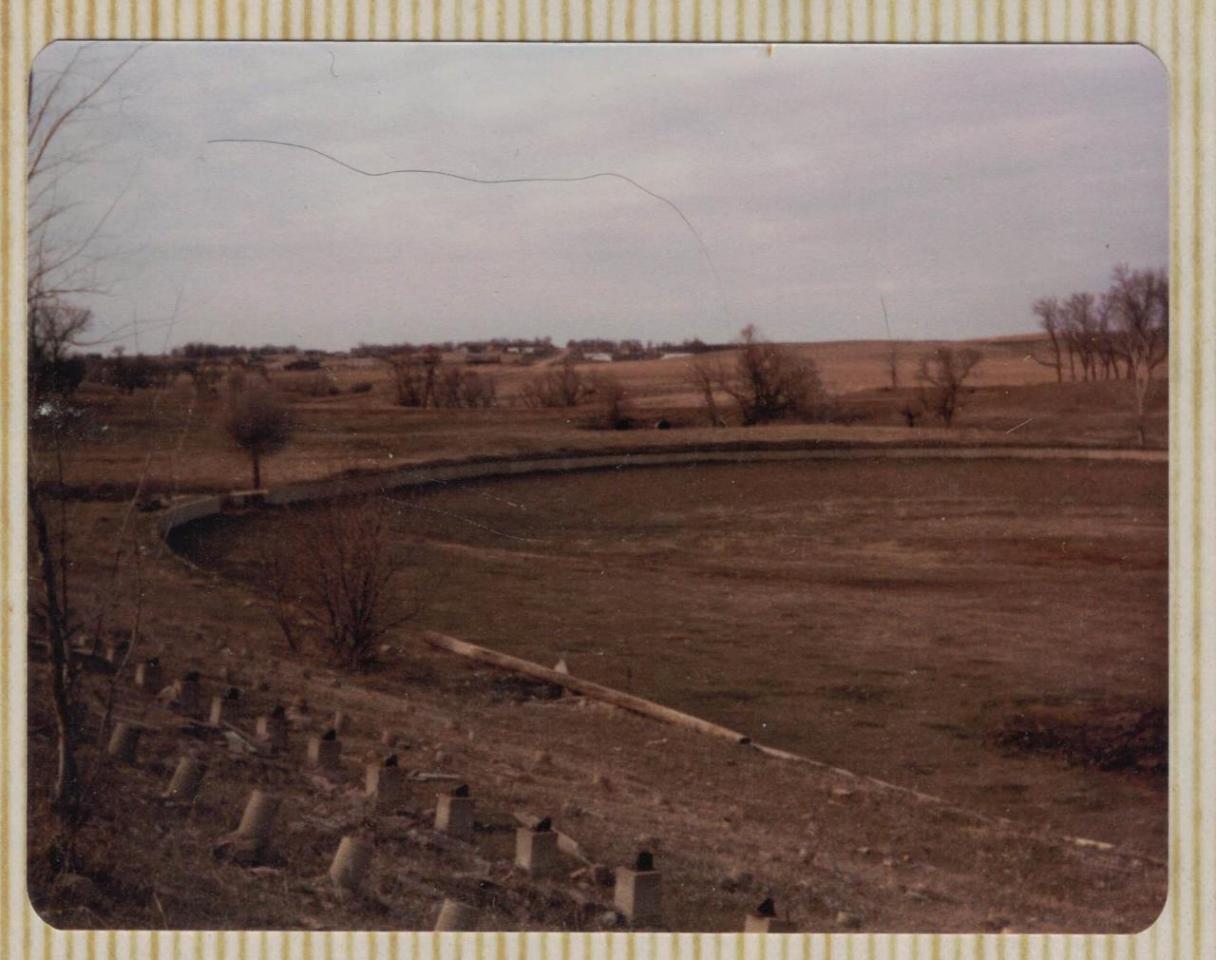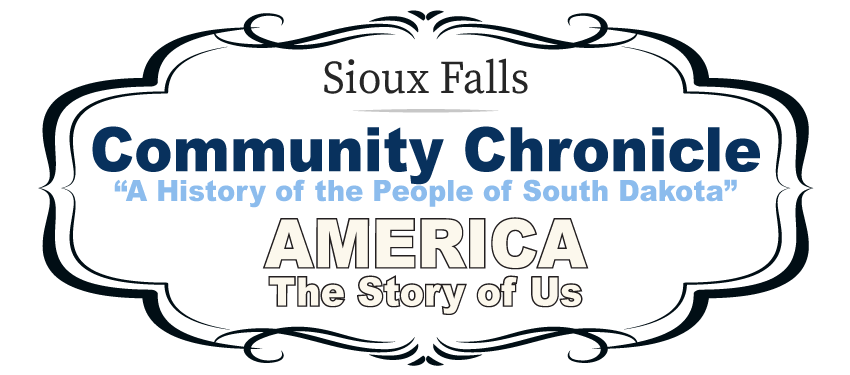
Soo Speedway
The track that made East Sioux Falls the place to be in the 1950's
VAN BEEK'S TRACT AN ADDN NW1/4 20 101 48 SIOUX FALLS CITY 2021 ANNEXED INTO SFRESOLUTION 63-21 @ Parcel # 10457.
8001 E 10TH ST @ 35 Acres in Size - the property recently annexed into City Limits 2021 Zoning Object ID# 394379

Soo Speedway 1954-1959
Soo Speedway 1954-1959 - this track was built east of Sioux Falls, South Dakota at the intersection of S.D Hwy 42 and Six Mile Road along the south side of E. 10th Street. The track was built by Francis and Bob Van Ann and held races every Sunday Night @ 8 pm Sharpe in the form of Stock Cars and later on a Modified Stock Car Class.
This track was very sophiscated for its day, it had a grandstand that held 3,000 fans, an on track watering system that Bob Van Ann had built utilizing the creek that ran behind the track, by creating four water valves in each turn. Each Night Bob could be seen using his Garden Hose to water the track, this track was not dusty at all.
The track hosted races every week at the pace to be in Sioux Falls, it averaged a packed grandstand weekly, averaged 40-60 cars per night, and the teams were paid 30% of the Back Gate.
In 1956, the drivers and teams protested, holding out for more purse money, the track owners said, ok, we will give you 40% of the back gate, meaning, they were not racing for $800 to $1500 each race, with the winner getting $250 to win $175 for second $125 for third, $100 for 4th, $90 for 5th and $10 increments down to $15 dollars.
By 1956, the car counts were going down, the weaker teams did not race as much, and others just did not race frequently. So what the owners did was split the class in two - by creating a Modified Stock Car Class aka Limited Class with different rules in order to excite new racers, and by giving the low income teams a class of their own.
Francis and Bob Van Anne being interviewed by Kelo-Land TV in 1956 View Here
However, this splits the Back gate in half, so they are racing for the same 40% but the purse was cut in half to help both classes.
Well, in the summer of 1958 - the racers again staged a boycott, lining their cars along Six Mile Road (gravel at the time), not letting anyone in the stands, nor the infield gates.
They were demanding a greater percentage of the back gate, a more 50-50 share, plus a share of the concessions, and grandstand ticket fees. The owners said, NO - that is too much.
You see, tracks depend on 60% of the Back Gate to help with the operational costs, mainly insurance costs and all; they utilize the GrandStand Ticket profits to pay the majority of operational costs; while the profits made off the Concessions and Souvenirs were to be reinvested back into the track itself, let alone provide the owners a steady paycheck.
Quite frankly, you cannot blame them - Soo Speedway was very sophifiscated for the time, it was the place to be on Sunday Night, and it was never dusty, always sold out, and it was driver friendly.
While Husets held its first race on Mothers Day 1954, and Soo Speedway the following week, Till Huset could NOT afford to keep up with Old Soo, Husets had no lighting which meant it had to race afternoons (bad for racing), or compete by racing on Friday nights which hurt car counts due to people getting off work at 6PM on Saturdays, which also meant "farmers" still working their fields could not attend due to working late, many of the teams were farmers in this day and age..Husets closed its doors in summer of 1955.
However, while the Soo Speedway owners said no to giving up profits on concessions and grandstand tickets, the drivers said they would rather pack up and go home.
The drivers and teams all met that night at the Local YMCA - they were trying their next move - they decided to form the Sioux Falls Stock Car Association, sell shares into the organization, thus owning 'stock' in their very own organization, meaning they organized as a group to generate revenues and profits.
While Soo Speedway made attempts to stay in business, they closed their doors in the summer of '59, but there was one last race in 1972, when a new investment group made an effort to restore the track, they rebuilt the outside retaining wall, replacing the former wooden guardrails with the present concrete wall, and had scheduled several sprint car races, however, in May of 1972, it would hold it's one and only sprint car event, and close their doors for good.
The bleachers and Announce Booth were sold to an Investment Group in Madison, South Dakota, who were building a track south of Madison, to be named Inter-Lake Speedway, later on changed to Lake County Speedway, which operated from 1966 to 2006.
Today, Soo Speedway sits abandoned, only the bleacher posts remain from the former bleachers, while the outline of the track remains in the grassy, cow field in the present. The land was currently rezoned mixed use commercial-residential, so, very soon, there will be no remaining evidence of the former track itself.
While the Sioux Empire Cycle Club would lease the land to hold motor cross events from 1974 to 1980, they too had built their very own operation near the Town of Renner shortly after, at Saddleback Raceway along 477th Avenue north of Sioux Falls.
Francis and Bob Van Ann brought racing to the Sioux Empire with the creation of Soo Speedway, Til Huset built a track on his farm land near Brandon-SD, and Walt Zirpel led by the racers had built the Hartford Half Mile all within a time period, that Racing was becoming center stage in an era of giving birth to "racetracks". It would become Bob's son, Tom Van Anne who in a twist of fate, would rise all the way to Vice President of Racing Operations at Huset Speedway from 1976 to 2016.
If it had all gone differently, the "Racers" could have had two successful tracks near Sioux Falls, South Dakota, if only they had done things differently, the two tracks, alongside Hartford Speedway, could have built a racing empire if only the "Drivers" understood business economics and allowed the track's to have permanent owners, separated from the racers themselves.
Soo Speedway, from 1954, to 1959, held regular races on Sunday Nights, brought local dirt racing to East Sioux Falls, while the track today sits abandoned today, the next chapter for the Van Beek Property now soon to become a part of the City of Sioux Falls as part of a residential development, or as a commercial strip mall. But one thing is sure, the history that took place on this property more than 45 years ago, helped to shape early entertainment life in early Sioux Falls, itself.
On one historic corner of S.D Highway 42, along Six Mile Road you had Soo Speedway, Arndt's Auto Wrecking, a salvage yard, and soon to be a future Golf Course. This one corner in East Sioux Falls is historic, and became the place to be in the 1950's.
What will become of this former racetrack, could the residents of Sioux Falls memorialize this property by naming a road Old Soo Road, or could they develop the property to preserve a part of its history, along the ancient creek bed that ran along the back stretch? Who knows. But what we do know, the Van Ann Family brought racing to the Sioux Empire before the Sioux Falls Skyforce, the Storm, let alone Stampede Hockey, let alone, the track set a shining example of what racing meant to the area.






